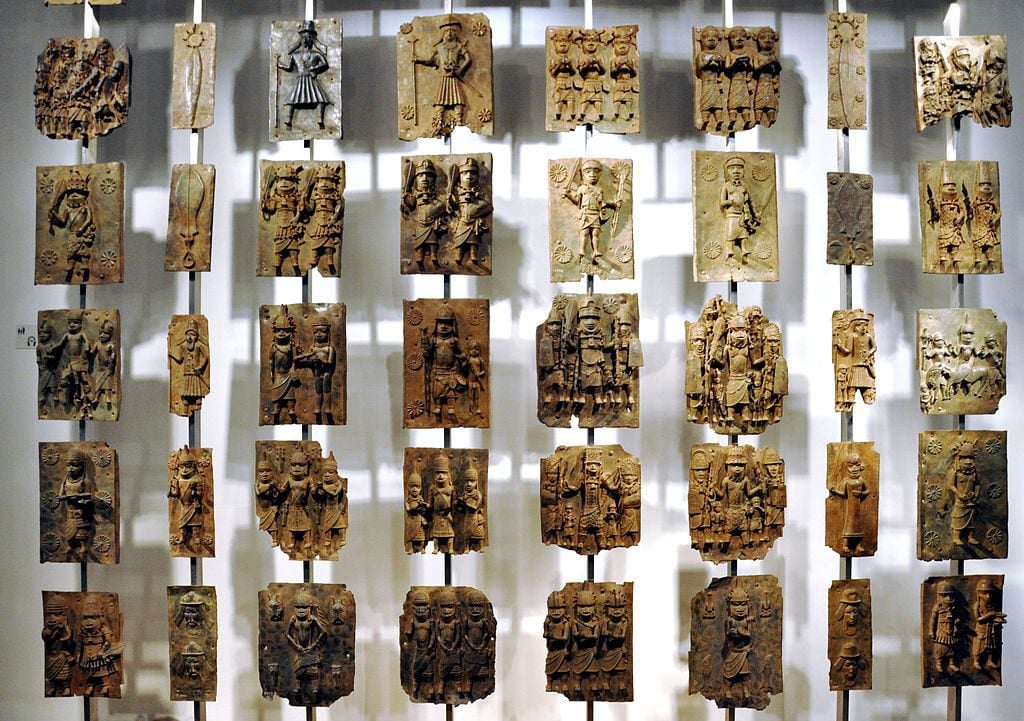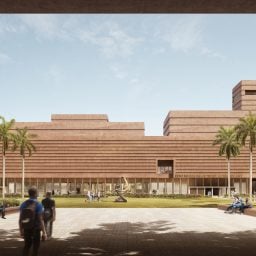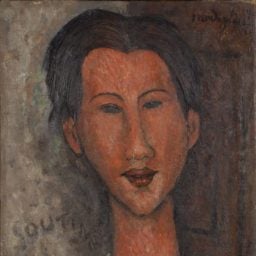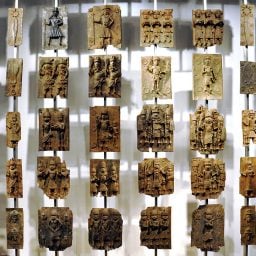Nigeria recently gave signals that it may accept the loan of Benin Bronzes in the collections of museums abroad. The art historical treasures from the former Kingdom of Benin (modern-day southern Nigeria) were plundered by the British in 1897 during a punitive expedition. In total, some 4,000 of intricate sculptures were removed from the Oba’s (king’s) palace, gifted and sold, and many ended up in museums in Britain, Germany, and the US. For decades, Nigeria has been trying to work with European governments and museums to retrieve some of it lost art, with little success. Now, it seems like reconciliation may finally become a reality.
No timeline for the return of the bronzes has been established, and the process is in its early stages. However, a representative for the British Museum, which currently holds the largest collection of Benin’s treasures in the world, recently told artnet News that talks have had a promising start. In conclusion to a meeting with the Benin Dialogue Group, which was established in 2007 to create a conversation between Europe and Nigeria about returning the works, the parties arrived at the suggestion of a proposal that would “work towards a permanent, but rotating, exhibition of loaned objects” to Nigeria, according to the representative.
Many are skeptical about whether the potential outcome is fair or even ethical. Some think that a loan agreement is simply not enough and just a continuation of colonialism.
“Many museums are still caught in a colonial mindset,” Juergen Zimmerer, who is a professor of global history at the University of Hamburg, tells artnet News. “They feel that they are the custodians for mankind, of preserving objects from all over the world, where people allegedly cannot look after them themselves. This is an echo of the pro-colonial civilizing mission.”
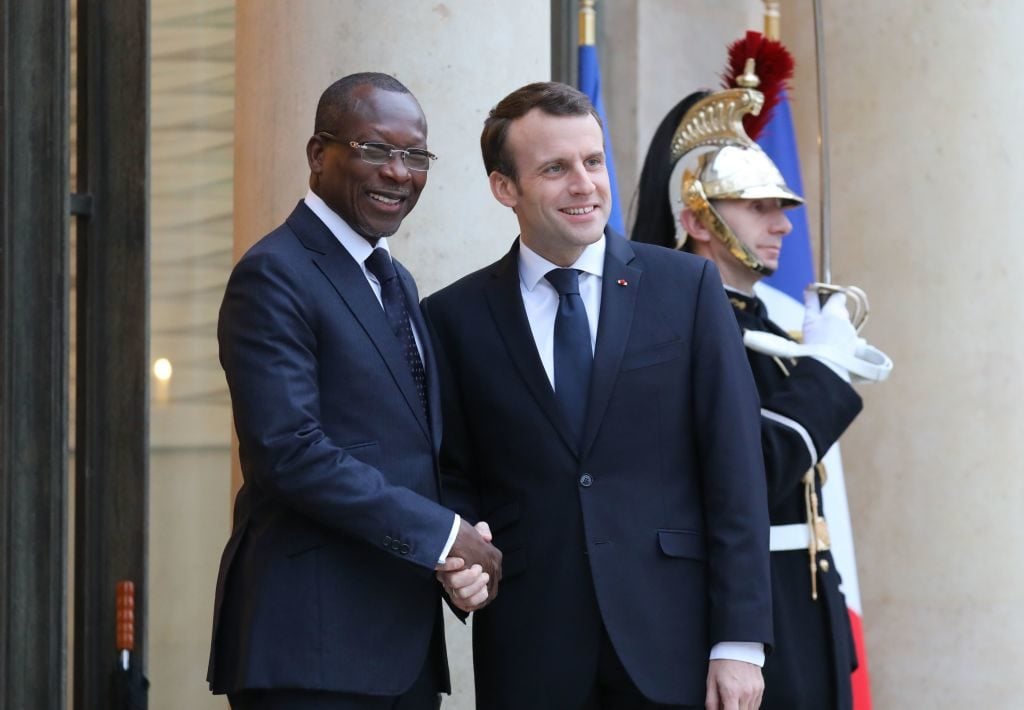
France’s president Emmanuel Macron shakes hands with Benin’s president Patrice Talon (The Benin Republic is not to be confused with the former Benin Kingdom, which is now a part of present day southern Nigeria) during his arrival to the Elysee Palace on March 5, 2018, in Paris. Macron has been vocal about restitution to former French colonies and called for a French plan for colonial-era restitution to its former colonies within the next five years. Photo by Ludovic Marin/AFP/Getty Images.
But the heated topic of restitution of looted cultural objects is showing no signs of abating. Greece’s Prime Minister officially requested the Parthenon Sculptures (also known as the Elgin Marbles) back from the British Museum in late June. The works were taken from the Acropolis in Athens by Lord Elgin in the 19th century when Greece was under Ottoman rule. The same month looted human remains were returned to indigenous Alaskans by the Prussian Cultural Heritage Foundation.
The story of the Benin Bronzes is echoed in a scene in the blockbuster movie Black Panther, which is set in a fictitious Museum of Great Britain that bears an uncanny resemblance to the British Museum. But Benin’s very real lost art can be found in the galleries and storerooms of museums around the world. Some are more transparent than others about how they acquired the contested art in the colonial period. We’ve compiled a guide to each institution’s holdings and an update on their latest statements about Nigeria’s longstanding restitution claim.
British Museum, London, UK
Number of objects: 700
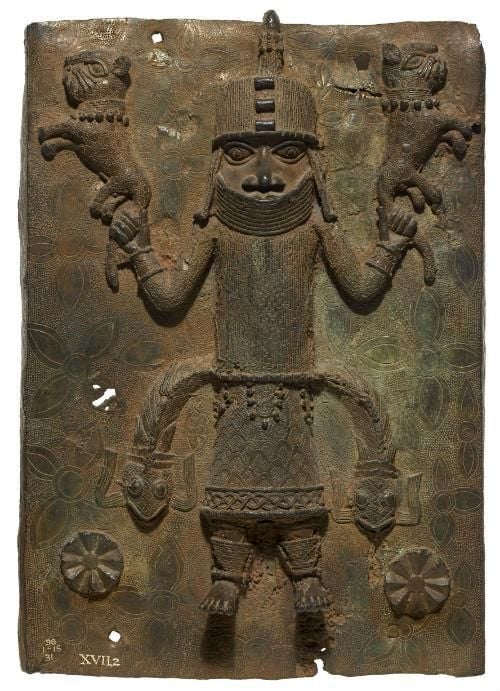
Benin Bronze plaque showing the king (Oba) in regalia and with symbols of royal power (ca. 16th–17th century). Collection of the British Museum.
Unsurprisingly, the British Museum holds the vast majority of the objects that were plundered by its soldiers. The museum acquired more than 200 plaques, made of brass, as a gift from the British government. The UK also has a remarkable pair of leopard sculptures, which are now in the Royal Collection. After looting and burning Benin City during the British Punitive Expedition in 1897, commanders sent the pair to Queen Victoria.
The British Museum recently told artnet News that there will be a follow-up meeting in Leiden, Netherlands (where the National Museum of Ethnology has 98 works from the Kingdom of Benin) this summer with the Benin Dialogue Group. “The British Museum is not able to consider the proposal until there is a clear indication that this is officially desired by the relevant Nigerian authorities,” a representative for the museum said.
Two bronze works from the 1897 expedition were returned to Nigeria in 2014, but it was not because of institutional conscience. Rather, Mark Walker, who owned an ibis and a monarch’s bell he inherited from his grandfather, returned the works. Walker’s grandfather was of one of the soldiers involved in the 1897 attack.
Ethnological Museum of Berlin, Germany
Number of objects: 580
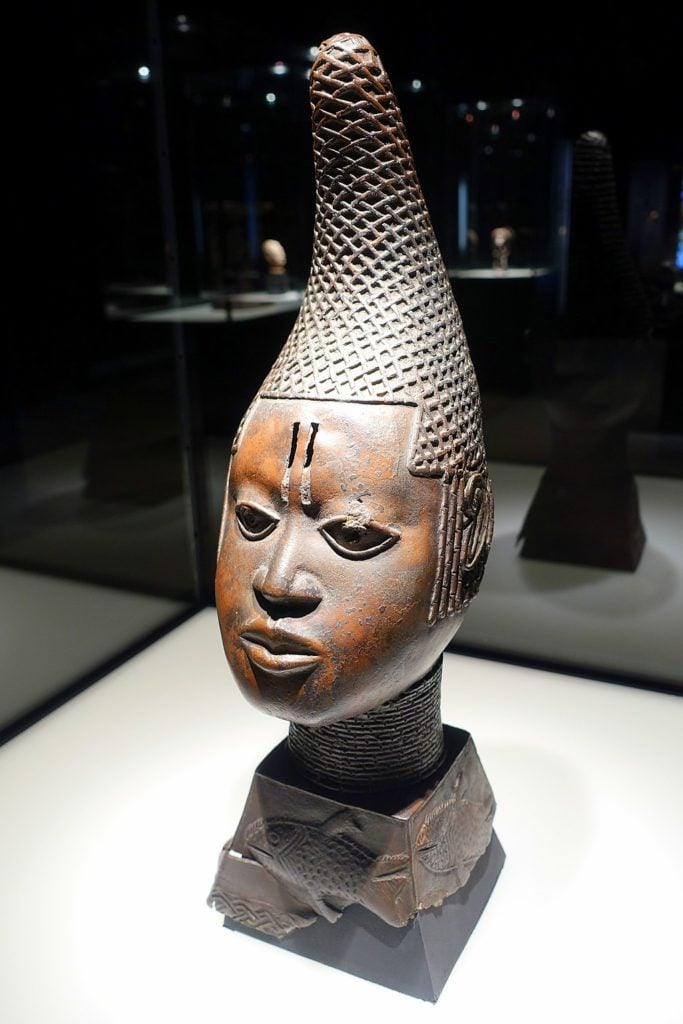
Memorial bust of king’s mother Iyoba, Benin Kingdom, located in the Ethnological Museum, Berlin.
The German ethnology museum has become the focus of the colonial debate in Europe, as it continues its epic move of half a million objects into the reconstructed Prussian palace in the center of Berlin. Director of the Prussian Cultural Heritage Foundation, Hermann Parzinger, said in a recent interview that he doesn’t think the issue with the Benin Bronzes is “black and white.” Parzinger told Der Tagesspiegel: “It’s too easy to say it’s all stolen, so send it back, especially since many pieces were already purchased on the market before the British Punitive Expedition.”
Parzinger has also said in February that the foundation had received “no direct restitution claims.” But the nonprofit group No Humboldt 21 says that’s not entirely true: “[There have been] innumerable demands made by both the Oba of Benin and the various Nigerian governments. There have been in the past few years many meetings and discussions on the restitution of Benin Bronzes in most of which German museum authorities participated, such as the recent meetings in Benin City on 19th and 29th [of] February 2013, which issued the so-called Benin Plan of Action on Restitution.”
Pitt Rivers Museum, Oxford, UK
Number of objects: 327
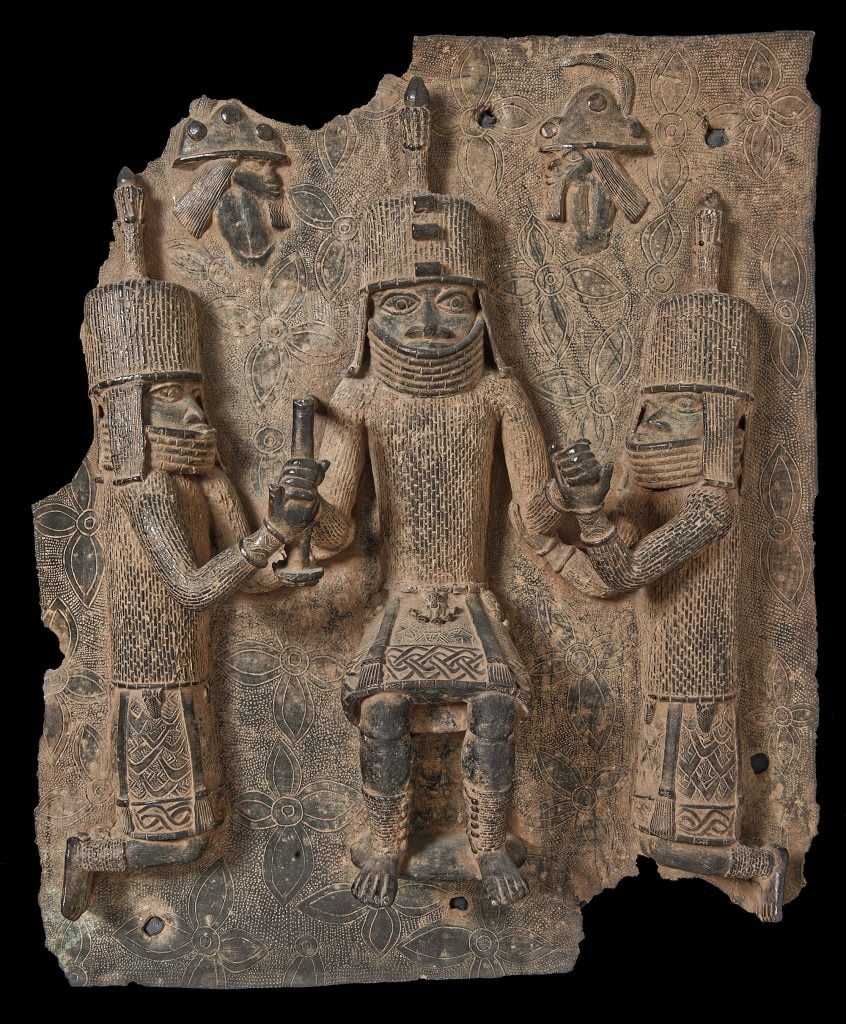
A Bronze Plaque looted from the Royal Palace of Benin, purchased by the Pitt Rivers Museum for five pounds in 1907. Collection of the Pitt Rivers Museum, Oxford.
The University of Oxford’s ethnographic museum is also a member of the Benin Dialogue Group. The museum has nearly one hundred objects from Benin on view, and 39 of these are confirmed to have been taken from the city by Captain George LeClerc Egerton, chief of staff on the 1897 British Expedition that resulted in the looting of thousands of objects. Egerton’s family and the Dumas Egerton Trust loaned the works to the museum in 1991 for a period of 100 years.
Weltmuseum Wien, Vienna, Austria
Number of objects: 200
Austria was unsuccessful in the so-called Scramble for Africa at the end of the 19th century, but its museums did benefit indirectly from other colonial powers’ expeditions. Recently, the Weltmuseum in Vienna, which is also a member of the Benin Dialogue Group, opened its own hall dedicated to colonialism, as opposed to dealing with it throughout the entirety of its collection.
“The collection has been very well-researched by the KHM Provenance Centre,” the Weltmuseum’s Dutch-born director Steven Engelsman said in an interview late last year. “There have also been cases of restitution. A new project is currently underway with Nigeria, where we want to exchange objects and send them into rotation,” he said. “This is certainly forward-looking.”
Museum of Ethnology, Museum of Arts and Crafts, Hamburg, Germany
Number of objects: 196
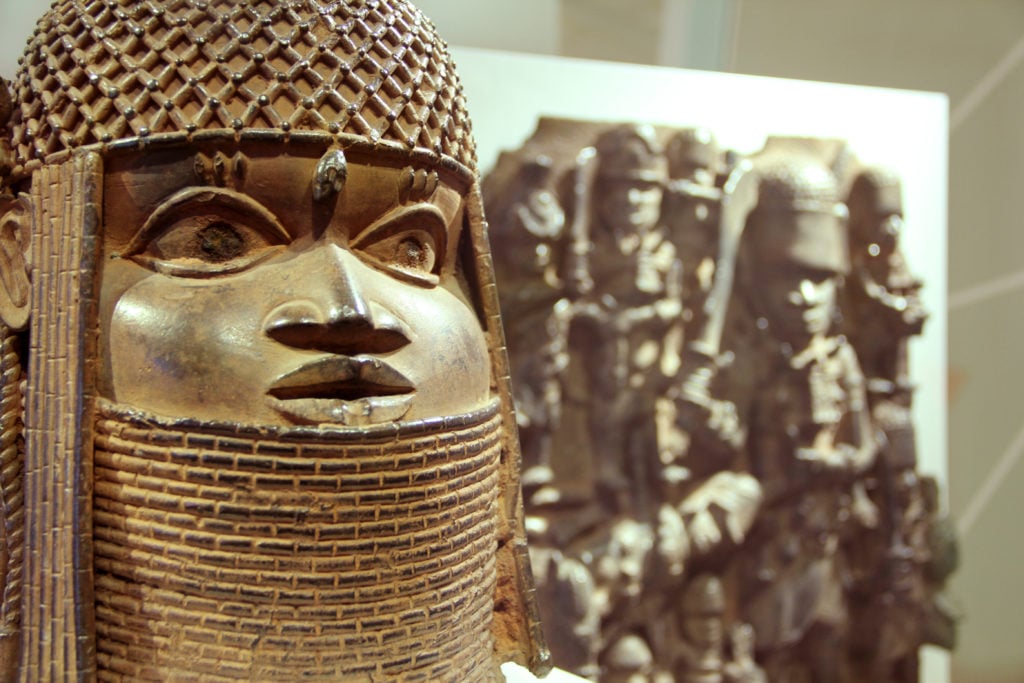
Exhibition view of “Looted Art? The Benin Bronzes” at MKG in Hamburg. Photo by Michaela Hille
The Museum für Kunst und Gewerbe Hamburg (MKG) has an ongoing exhibition series focused on provenance issues. For its most recent edition of “Looted Art? Provenance Research on the Collections of the MKG,” the museum focused on three Benin Bronzes in its collection. But the research pinpoints the institution’s founding director, Justus Brinckmann, who was the first German museum director to obtain Benin bronzes. To acquire these looted objects, he instigated a trade via the port city. Because of Brinckmann, a large portion of these objects ended up in the Museum of Ethnology in Hamburg, which the museum says are “some of the most valuable treasures of the African collection.”
Dresden Museum of Ethnology, Dresden, Germany
Number of objects: 182
Dresden and Leipzig are both parts of a network of museums, the Saxony State Ethnographic Collections.
Dresden’s director, Nanette Snoep, told Saxony State Ethnographic Collections that she felt relaxed and that restitution will not empty the museums. She said sacred objects that are “perhaps only a stone for us, are extremely important for a community.”
While Dresden has a large amount of these works, the neighboring Saxonian city of Leipzig has another large bundle, with some of the most valuable of all Benin’s looted works: A carved head located at the Grazzi museum in Leipzig is estimated to be worth over €10 million ($12 million), according to one investigative journalist.
Colonial politician and professor Hans Meyer’s Benin collection became the property of the Free State of Saxony in 2001 after a dispute. They had been on permanent loan since 1902, but his family reclaimed the works after German reunification. As a resolution, Meyer’s heirs were given €6.9 million ($8 million) for 53 Benin objects. It was a steal of a deal for Saxony’s museums, considering the recent boom in the African art market.
Metropolitan Museum of Art, New York
Number of objects: 163
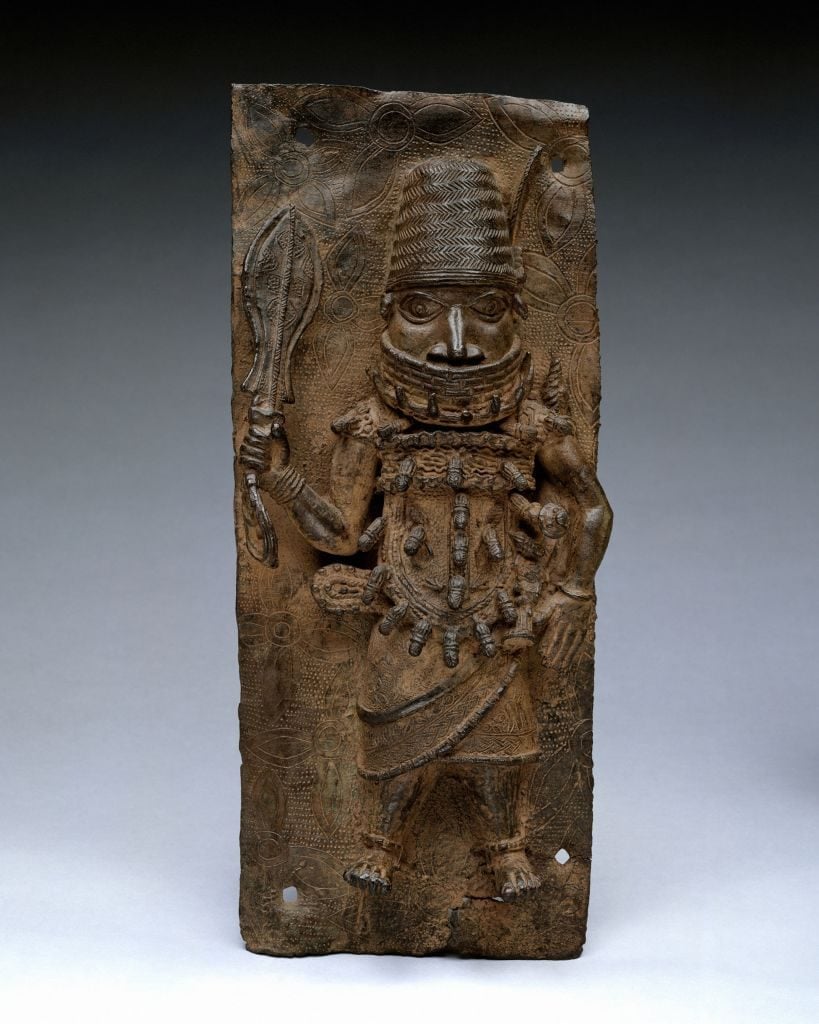
Plaque: Warrior Chief, 16th–17th century, Nigeria, Court of Benin, Edo peoples. Photo by: Sepia Times/Universal Images Group via Getty Images.
One of the most important objects from the Benin Kingdom is the Idia head bronze and mask pendant, which depicts the Benin Queen Mother Iyoba. There is one at the British Museum and another at the Metropolitan Museum in New York, which is slightly more damaged.
The Met, as well as other museums in the US and France, have yet to become members of the Benin Dialogue Group, though it is hoped they will join in future. According to the Art Newspaper, Cambridge’s Museum of Archaeology and Anthropology director said the group has had “preliminary discussions” with US museums and that “it is hoped they will participate in future.”
